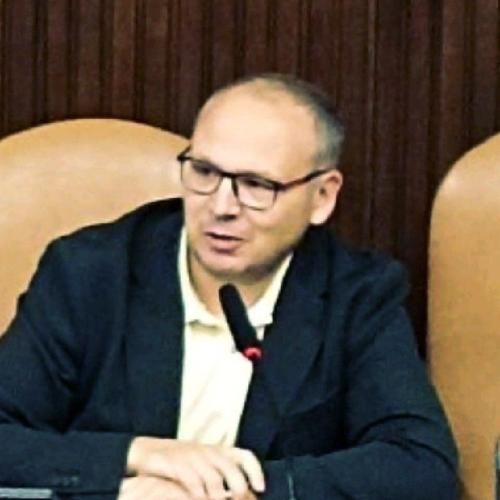
JOSE BENITO
QUINTANA ALVAREZ
Profesor titular de universidade
Publicacións (159) Publicacións de JOSE BENITO QUINTANA ALVAREZ
2024
-
Analytical methodology for unveiling human exposure to (micro)plastic additives
TrAC - Trends in Analytical Chemistry, Vol. 173
-
Continuous UV-C/H2O2 and UV-C/Chlorine applied to municipal secondary effluent and nanofiltration retentate: Removal of contaminants of emerging concern, ecotoxicity, and reuse potential
Chemosphere, Vol. 361
-
Determination of regulated perfluoroalkyl substances (PFAS) in drinking water according to Directive 2020/2184/EU
Environmental Science and Pollution Research
-
Determination of the urinary concentrations of six bisphenols in public servants by online solid-phase extraction-liquid chromatography tandem mass spectrometry
Analytical and Bioanalytical Chemistry, Vol. 416, Núm. 20, pp. 4469-4480
-
In vitro biotransformation of 3-methylmethcathinone (3-MMC) through incubation with human liver microsomes and cytosol and application to in vivo samples
Journal of Pharmaceutical and Biomedical Analysis, Vol. 248
-
Insights into the application of the anodic oxidation process for the removal of per- and polyfluoroalkyl substances (PFAS) in water matrices
Chemical Engineering Journal, Vol. 482
-
Investigation of in vitro biotransformation of tris (1-chloro-2-propyl) phosphate and confirmation in human urine
Current Research in Toxicology, Vol. 6
-
Letter to the editor regarding Collard et al. (2023): “Persistence and mobility (defined as organic-carbon partitioning) do not correlate to the detection of substances found in surface and groundwater: Criticism of the regulatory concept of persistent and mobile substances”
Science of the Total Environment
-
Screening of organic chemicals associated to virgin low-density polyethylene microplastic pellets exposed to the Mediterranean Sea environment by combining gas chromatography and liquid chromatography coupled to quadrupole-time-of-flight mass spectrometry
Science of the Total Environment, Vol. 922
-
Selective electrochemical oxidation of organic compounds in a mass transfer-enhanced electrochemical flow reactor (e–NETmix)
Journal of Environmental Chemical Engineering, Vol. 12, Núm. 5
-
Wastewater-based epidemiology methodology to investigate human exposure to bisphenol A, bisphenol F and bisphenol S.
Water Research, Vol. 261
-
Wastewater-based epidemiology to assess pharmaceutical consumption. Spanish perspective
Science of the Total Environment, Vol. 953
2023
-
A new analytical method to determine trace level concentrations of pharmaceuticals in influent wastewater: A tool to monitor human use patterns
Microchemical Journal, Vol. 193
-
Are Fish Populations at Risk? Metformin Disrupts Zebrafish Development and Reproductive Processes at Chronic Environmentally Relevant Concentrations
Environmental Science and Technology, Vol. 57, Núm. 2, pp. 1049-1059
-
Assessing the impact of a major electronic music festival on the consumption patterns of illicit and licit psychoactive substances in a Mediterranean city using wastewater analysis
Science of the Total Environment, Vol. 892
-
Continuous-flow titration of low iron doses to promote photo-Fenton and photo-Fenton-like processes at neutral pH
Chemical Engineering Journal, Vol. 476
-
Efficient Validation Strategies in Environmental Analytical Chemistry: A Focus on Organic Micropollutants in Water Samples
Annual review of analytical chemistry (Palo Alto, Calif.), Vol. 16, Núm. 1, pp. 401-428
-
Is the Environmental Risk of Metformin Underestimated?
Environmental science & technology, Vol. 57, Núm. 23, pp. 8463-8466
-
Occurrence of persistent and mobile chemicals and other contaminants of emerging concern in Spanish and Portuguese wastewater treatment plants, transnational river basins and coastal water
Science of the Total Environment, Vol. 885
-
Ozone membrane contactor for tertiary treatment of urban wastewater: Chemical, microbial and toxicological assessment
Science of the Total Environment, Vol. 892